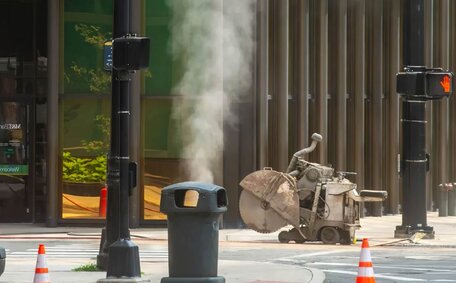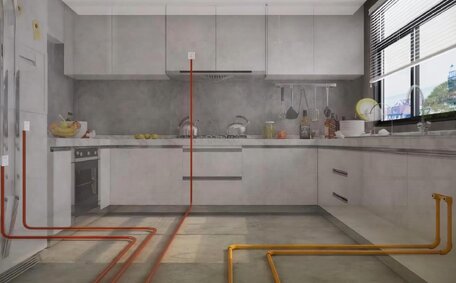
How To Move A Gas Meter
Need your gas meter relocated? You can’t move it yourself - contact your supplier to arrange for a gas engineer to reposition it safely. Charges may apply depending on circumstances.
Read MorePipe relining is an innovative trenchless method for repairing and replacing damaged pipes without the need for expensive and disruptive excavation. It involves inserting a resin-impregnated liner into the existing pipe and curing it in place to form a new pipe-within-a-pipe.
Relining provides a structurally sound, long-lasting solution while avoiding the mess and disruption of traditional pipe replacement. Instead of digging trenches to access pipes, relining uses small access points and specialised equipment like inversion drums and steam or UV curing systems.
This trenchless method is popular for restoring sewer, stormwater and drainage pipes suffering from issues like cracks, leaks, root intrusion and corrosion. It’s a cost-effective and efficient way to upgrade old pipes and prevent future problems.
The use of pipe relining has grown as plumbing companies and homeowners recognise the benefits over conventional pipe repairs. The ability to reline pipes without destroying landscaping or driveways makes it an attractive option for residential settings. Meanwhile, the minimal surface disruption makes it ideal for commercial sites and municipal sewer systems.
Pipe relining allows defective pipes to be restored and reinforced without the major expenses and inconvenience of full replacement. For potential pipe issues, it’s a solution plumbers are increasingly turning to first before resorting to excavation and pipe replacement methods.
Pipe relining provides numerous advantages over traditional pipe replacement methods:
For ageing and deteriorating pipes, relining is a smart, non-invasive and sustainable repair approach. It restores pipe function and extends service life at a fraction of the cost of traditional pipe replacement methods.
Pipe relining utilises specialised equipment and tools for accessing, cleaning, inspecting and lining pipes.
Some common equipment used includes:
Having the latest relining tools and technology allows the process to be conducted efficiently with minimal disruption to customers.
The right equipment in skilled hands allows defective pipes to be restored in-place quickly and cost-effectively.
High pressure water jetters are an essential tool for pre-lining preparation in the pipe relining process. These powerful jetting machines propel water at pressures up to 5000 PSI to thoroughly cleanse the interior of damaged pipes.
Effective cleaning is crucial prior to installing a pipe liner. Jetters clear away dirt, grease, scale, encrustations and especially tree roots that have penetrated and invaded the old pipe.
Tree root growth is a major cause of pipe damage and blockages. High pressure jetting can cut through the toughest roots that enlarge inside pipes, cracking and deforming them. Thorough root removal provides a clean pipe surface for proper liner bonding.
Sophisticated jetters like the ones used by our business allow pressure and flow rate to be precisely controlled. This enables safe and efficient cleaning for pipes of all materials and sizes.
The pressurised water emitted from the jetting hose and nozzle scours the full circumference of the pipe. Any remaining debris is captured for removal via an upstream access point.
Water jetting is a non-destructive process that does not harm the structural integrity of pipes. It is also an eco-friendly technology, using only highly pressurised water rather than chemicals.
By harnessing the power of water, high pressure jetters provide an indispensable capability for pipe relining preparation. They enable damaged pipes to be thoroughly cleaned and restored from the inside out.
Pipe cameras are an indispensable visual inspection tool in the pipe relining process. They provide plumbers with a detailed look inside pipes to assess conditions and determine if relining is suitable.
There are two main types of cameras used:
High resolution video cameras capture crisp footage that is viewable in real-time on surface monitors. Advanced cameras employ pan, tilt and zoom functions for enhanced visibility.
Thorough pipe inspection reveals:
Pipe cameras are vital for identifying if relining is suitable or if full replacement is needed. They also help determine the length and diameter of liners required.
Cameras guide plumbers in clearing obstructions and prepare the pipes for optimal liner bonding. Post-lining, they check the installation quality and any need for tweaks or repairs.
Pipe cameras provide plumbers with “eyes inside the pipes” to facilitate educated relining decisions. They are an essential technology that ensures quality, long-lasting pipe renovations.
Expandable bladders play a vital role in the pipe relining process. They are used to invert the resin-saturated liner into the damaged pipe.
Bladders are cylindrical devices made of durable material. They have an opening at one end where the felt liner soaked in epoxy resin is inserted. The bladder is then fed into the pipe needing repair.
High pressure water or air is used to inflate the bladder, which turns it inside out. This inversion process presses the liner firmly against the inner pipe walls to take its shape.
Bladders come in varying diameters and lengths to accommodate different pipe dimensions. Specialised bladders with bend restrictors can negotiate bends and elbows.
Quality bladders engineered for pipe relining provide controlled inversion pressure. This ensures the liner is installed smoothly without wrinkles or folds.
Once the liner is cured and hardened, the bladder is deflated and extracted. It is then cleaned and prepared for the next relining job.
From installing liners to quality assurance checks, expandable bladders are indispensable to the pipe relining workflow. Their flexibility and responsiveness under pressure transforms the resin-infused liner into a new, structurally sound pipe.
Epoxy resin is the key material used in creating pipe liners for relining. The two-part resin is combined with a felt or fibreglass liner, then cured to form a robust new pipe.
High-strength epoxy resins create a durable, watertight barrier able to withstand decades of use. Different resin formulations have been engineered specifically for potable water, sewer, drainage and gas pipe applications.
The resin saturates into the liner material, bonding it into a tough, seamless pipe able to resist abrasion, chemicals and root intrusion. This restores structural stability and eliminates leaks.
Most resins cure at ambient temperatures using an initiator and catalyst. Curing can also be accelerated by applying heat, steam or UV light. Cured liners provide a smooth surface for maximum flow.
Quality epoxy resins make all the difference in effective pipe remediation. Advanced resin technology allows trenchless pipe repairs to be completed with long-lasting results.
Pipe relining has become an increasingly popular trenchless repair option among Sydney homeowners and businesses alike. Its efficiency and cost-effectiveness compared to traditional pipe replacement makes it an attractive solution for ageing drainage systems.
With minimal digging and disruption to properties, pipe relining allows deteriorating pipes to be restored quickly and hassle-free. Many plumbers like Menai Plumbing now specialise in this service due to rising demand.
We routinely recommend pipe relining to clients as an effective method to reinstate structural integrity and eliminate leaks and blockages. The longevity of epoxy liners also prevents future pipe problems long-term.
Pipe relining effectively upgrades underground pipe networks throughout Sydney without destruction to infrastructure or landscaping. The ease and accessibility of this trenchless method will ensure its continued growth in popularity for residential homes and commercial sites.
p>p>p>p>p>p>p>p>p>p>p>p>p>p>p>p>p>p>p>p>p>p>
p>Several key materials are utilised to create the cured-in-place pipe (CIPP) liners installed during pipe relining projects.
Epoxy ResinsTwo-part epoxy resins are used to saturate the felt liner. When combined, they cure into an impermeable, structural barrier. High-strength epoxy resins tolerate temperature fluctuations, acids, abrasion, and root penetration.
UV ResinsSpecial UV-curable resins allow liners to cure rapidly under ultraviolet light. This provides fast installation and return to service.
Once the liner is installed inside the pipe, it needs to be cured or hardened. There are a few different ways plumbers can cure the liners:
Our experienced plumbers use the best curing method for each job. Proper curing ensures the installed liner hardens into a like-new pipe. Once cured, the pipe relining process is complete and the pipe is restored.
Need your gas meter relocated? You can’t move it yourself - contact your supplier to arrange for a gas engineer to reposition it safely. Charges may apply depending on circumstances.
Read MoreInvesting in a solar hot water system can save up to 75% on water heating costs. With great returns and added home value, solar hot water can be a smart choice over electric or gas heaters. Contact us to see if it’s the right investment for your home.
Read MoreWhile natural gas and propane can both power appliances in your home, they have notable differences when it comes to BTU output, infrastructure, safety, cost and more. Understanding these key contrasts will help you determine which is better for your specific needs.
Read MoreMenai, 2234 NSW
We will call back as soon as possible.




